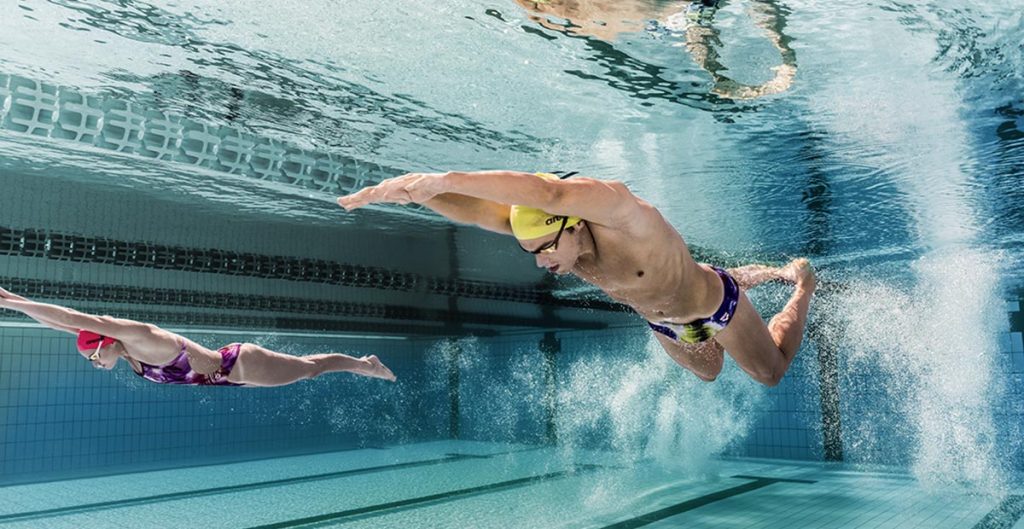For many swimmers, practice is just about putting in the yards. But for University of Virginia Head Coach Todd DeSorbo, there is much more to it than that. His coaching philosophy revolves around getting his swimmers to think – to concentrate solely on their movement through the water.
“I like getting them to think about every stroke in practice,” says DeSorbo, “so they don’t have to think about it at a meet.”
To help his swimmers focus on their technique, DeSorbo utilizes multiple training tools, including arena’s Flex Paddles and Powerfin Pro. DeSorbo’s workouts consist of drills that help his swimmers get their maximum distance per stroke.
“Length equals speed,” he explains. “I get them to think about making their arms and body as long as possible.” The Flex Paddles add an extra challenge during these body-lengthening drills. DeSorbo says the mesh fabric takes away the feel of the water across the hand. While wearing these bendable paddles, swimmers must work extra hard to create enough force during their catch to propel themselves through the water.
The head coach commonly pairs the Flex Paddles with a drill he calls “Power Catch-Up.” He says the drill is similar to the traditional Catch-Up drill, but instead of your hands touching out in front of you, your arms are in the “11 position” (with your hands shoulder width apart). That way, DeSorbo says, your arm is in the correct position to start your next stroke catch. Flex Paddles are also used during one-arm drills, stroke limit drills and parachute drills.
DeSorbo applies the same technique during kicking sets. His swimmers use the Powerfin Pro to improve their underwater dolphin kick. The short, inclined blade of the fin allows for the kick to be quick and continuous, but also efficient. He tells his swimmers to focus on each kick as one in and of itself.
“Think of every stroke or dolphin kick is a one rep max bench press,” says Coach DeSorbo. “The power and force production is the same as in the weight room.”
To do this, DeSorbo limits the number of kicks his swimmers can take each length, forcing them to get the most out of each kick. The goal with the fins is getting the athletes to swim at a pace they normally wouldn’t be able to go. Once the swimmer is accustomed to that feeling of speed, the hope is they can swim faster than they thought possible without fins.
To learn more about the Flex Paddle, the Powerfin Pro, or arena’s full line of competitive swimming training tools, techniques and equipment, visit arenawaterinstinct.com.
